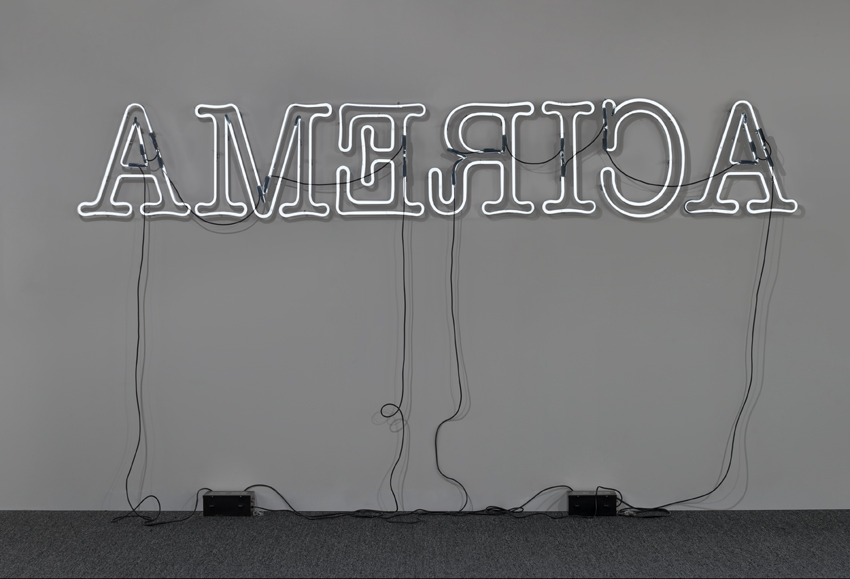Though Glenn Ligon began his career as an abstract painter, after enrolling in the Whitney Independent Study Program in the mid-1980s he turned to more conceptual concerns. He is now known for using text and found images to introduce a broad range of references in his work.
Rückenfigur is an important neon piece that was included in the 2011 exhibition Glenn Ligon: America at the Whitney Museum of American Art in New York. It consists of a neon sign, painted black, installed on the floor. The title, literally “back figure,” is a German art-historical term for the Romantic device of depicting a subject from behind, often contemplating a grand landscape, as in the work of Caspar David Friedrich. Facing the same direction, the viewer can more readily identify with the subject’s experience. Ligon literalizes the title by placing the ostensible “front” of the neon sign against the floor, placing the viewer in the symbolic position of looking at the back of the vast and diverse landscape that is America.
A flagship work by Ligon, and his first to enter the ICA/Boston collection, Rückenfigur engages with questions of national and racial identity as well as the process of identification in a simple, rigorous way. It enters into dialogue with other text-based works in the collection, especially those that address the complexity of race, by such artists as Ellen Gallagher, Kerry James Marshall, and Lorna Simpson.
800.11.1
